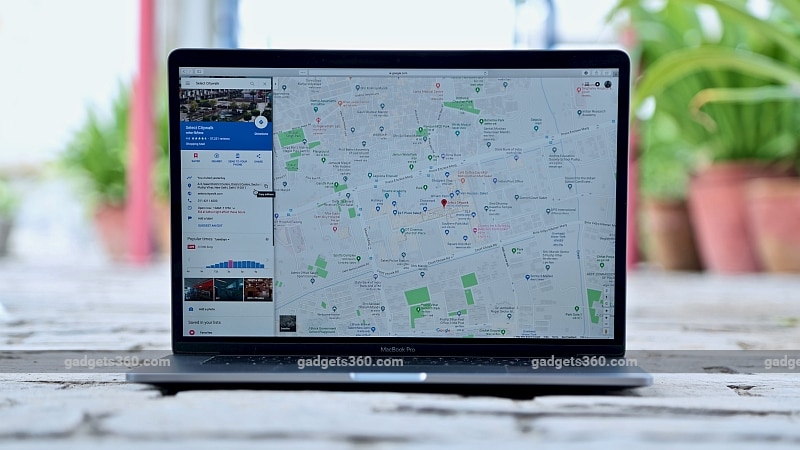- Home
- Apps
- Apps Features
- Google Maps API Price Hike Is Threatening the Future of Some Companies
Google Maps API Price Hike Is Threatening the Future of Some Companies

Google recently increased prices for the Maps API, while limiting what you can do without paying.
"The impact of the rise in the prices of Google Maps APIs is huge. We [would] either like to switch off our website or find an other solution," says Petri Karjalainen of Naturist BnB, an accommodation booking platform for naturists. "We are definitely not going to continue with Google Maps. Our revenue can not absorb the costs."
Karjalainen is not the only founder evaluating his options ever since Google Maps announced a sharp increase in pricing for the API it offers developers to integrate the service within their apps. Alongside the hike - which some developers claim is as much as 14 times in certain scenarios - Google has also drastically limited the use developers can get from the free tier of the Maps API.
Google Maps has been used as a backbone to build some of the leading apps and services like Lyft, 99acres, and Big Basket that use a mix of locations and navigation data provided by Google. The API is equally popular among smaller developers, from stores using the service to provide directions to their establishment, to those looking for more advanced use cases like Street View.
While Google had a pretty generous free tier of the Maps API until recently, the changes are significantly impacting what developers can do with the platform without it costing them a small fortune.
The search giant's recently switched everyone using Google Maps to a pay-as-you-go pricing plan for the core APIs enabling mapping services on websites and apps. The changes came into effect on July 16, and the pricing is same all across the globe. It essentially merged the old standard and premium plans, and its individual Google Maps products including Directions, Geolocation, Places, Routes, and Street View, are now being billed differently. The company does offer a $200 monthly credit to continue to enable access to its service within limits.
![]()
Google Maps Platform offers a $200 monthly credit
Karjalainen recalls when he found out about the changes. "When I saw the email notification from Google I was not sure how it would affect us," says Karjalainen, who earlier this year co-founded Naturist BnB along with his wife Minna Karjalainen. "Initially, I thought it won't be very big impact as we are anyhow relatively small niche and our user base is moderate." But all that changed pretty quickly.
"Also, calculating the estimated costs was a bit challenging and notice time very short, so I really didn't know what to expect. Decided to wait and see until the and of July," he explains. "That was a big mistake. Currently, Google Maps API fees is the largest single running cost in our business endeavour."
Until the July 16 update, developers with an app or website that exceeded the limit of 25,000 maps views per day needed to pay $0.50 (approximately Rs. 34) per 1,000 additional requests, up to 100,000 per 24 hours. But with the new changes, the same 1,000 additional requests apparently cost $7 (roughly Rs. 481).
What's more, all developers - irrespective of their usage - will be required to have a valid API key and a Google Cloud Platform billing account. This is also a mandatory requirement to get the free $200 credit that offers access to not just dynamic and static maps but also to Google's Routes and Places products that are among the three prime offerings under the Google Maps Platform. If a developer or entrepreneur chooses to avoid signing up with a billing account, the Maps implementation will return an error or show a map with a watermark, degrading the experience for end-users.
What the developers are saying
Open Web evangelist Kyle Simpson runs Getify Solutions in Austin, Texas, which hosts various sessions on JavaScript. He believes that the rise in the prices of Google Maps APIs is going to shock a lot of small- and medium-sized projects.
"If you are a big project, you're already on some sort of enterprise contract with Google, and you probably already had some sort of advance notice of these changes and/or some grandfathering of pricing," Simpson tells Gadgets 360. "But for the rest of us, it's a shocking and frustrating change. I think it will create a big wave as people come to grips with what this means to their bottom line. I also think it will discourage lots of people like me who want to create free/ personal usages of maps."
"I understand that Google wants to make this into a line of business," says Simpson. "But it feels like they're taking advantage of us. They know that they're the best, and that no one else is even close. Instead of just giving us Maps for free or very cheap, in exchange for collecting all our usage data, they now feel they need to charge really high prices."
Google, on the other hand, believes the new prices reflect the market reality more accurately.
"We adjusted our plans and pricing as we updated our product offering, improved the overall experience, and to reflect current market conditions," a Google spokesperson tells Gadgets 360. "We thought carefully about how to price Google Maps Platform products and introduced a free tier, a $200 credit, that we expect will cover the usage of most of our customers. Of the small percentage of customers that will be impacted outside of this, we're committed to helping them transition to the new experience as smoothly as possible."
Chandigarh-based Jugnoo has so far largely been relying on Google Maps to provide auto-rickshaw bookings and doorstep delivery of grocery and meals. But with Google Maps API pricing changes, co-founder Chinmay Agarwal and his team are now planning to look for alternatives. "In the short term, we will have to absorb the costs, but this will force us to look into developing in-house mapping solution or use open source technologies," says Agarwal, who's also the CTO of ride-hailing app Jugnoo.
"Over time, we will factor our dependence on Google Maps APIs and tweak our algorithms to rely less on them," he adds. "I feel it's a very shortsighted approach to target small developers as the on-demand industry still needs a lot of innovation to become a ubiquitous service. Small developers are necessary for innovation."
While the likes of Uber and Ola refused to participate in this story, the former is using and even actively contributing towards open source Google Maps alternatives like OpenStreetMap (OSM). "Uber sees OSM asa valuable tool and uses it in internal models to help determine time + distance estimates for fare calculation and to optimise driver and rider matching," wrote Suneel Kaw, Maps Product Manager, Uber, in a post on the OpenStreetMap forum last month. "In certain circumstances, we are able to observe that road directionality and turn restrictions are not up-to-date. We plan to explore these issues and, where appropriate, submit updates to correct the issue. We have selected the Delhi NCR region as the first city for this initiative."
It's no surprise that a company the size of Uber is continuously evaluating its options, and sources tell Gadgets 360 that Ola is also weighing up Google Maps alternatives in light of the latest developments.
What are the alternatives?
Sagar Shewarmani, Sales and Partnership Head of location-based solutions provider LocationIQ, tells Gadgets 360 that it is the small and medium businesses that will be most impacted by the increase in pricing of Google Maps APIs. "The current uproar is due to the intensity and the pace of the increase - a 1400 percent price hike in a very short period of time is overwhelming," says Shewarmani. "We've spoken to people whose costs have gone from $0 to $4,000 per month, other see costs increase from $1,000 to $30,000 per month! Large enterprises will always have enough time and resources to negotiate custom contracts, but small and medium businesses are directly hit by the shift."
Other Google Maps competitors such as Here Technologies, TomTom Maps, and Esri all using Google's pricing changes as an opportunity to woo developers. Here Technologies and Mapbox recently even published tutorials on their respective websites to help existing Google Maps clients switch to their offerings.
Here Technologies has also announced a new freemium model to take on Google Maps. Unlike the free $200-credit that is given to clients when they sign up for Google Maps Platform and add a payment method, Here Technologies doesn't even want you to add a credit card to your account. Here's basic plan is limited to a generous 250,000 transactions each month.
![]()
Here Technologies brings a freemium option to counter Google Maps
"We think our new price plan with the freemium option is very attractive to developers who are looking for options on the market to build location-aware applications, both in terms of pricing and breadth of available features and functionalities," a Here Technologies spokesperson tells Gadgets 360. "With the freemium option, developers can have free access to rich data and platform services, including: maps, geocoding, geofencing, places, and intermodal routing, as well as advanced features such as turn-by-turn navigation and custom route, waypoint and fleet APIs for the development of public, private, free and paid apps."
Esri, a company that offers products such as ArcGIS, ArcView, ArcGIS Server, ArcIMS, ArcSDE, and ArcGIS Mobile to rival various Google Maps offerings, sees the latest developments as an opportunity to reach new developers. "For us at Esri, it's an opportunity to broaden developers understanding of our APIs and what can be done with our technology," says David Cardella, Developer Technology Product Manager, Esri.
The Redlands, California-based company already offers its APIs or SDKs for Web, native, and mobile platforms for free for the the first 1,000,000 basemap and geosearch transactions per month. It also lets developers and enterprises style basemaps and manage map content as well as host, query, and analyse their native geographic data.
"We have some clear advantages over our competitors in this space and our plan is to emphasise them," Cardella tells Gadgets 360. "In addition to common capabilities like points on the map display, routing and geocoding, we offer developers the ability to host their own authoritative content, enrich it with demographics from thousands of variables, edit data while connected or disconnected and perform sophisticated analysis like creating drive time areas or solving location allocation problems. When it comes to deploying solutions, we have favourable licensing terms not offered by other mapping providers."
Bryan Housel, who's on the board of directors for the US chapter of OpenStreetMap, says that the hike in the charges of Google Maps APIs is forcing Web developers to reevaluate their choices. "Earlier, the easy choice might have been to use Google for all of these things, but developers now realise they have a choice in how they integrate location into their applications. They get the benefit of an open solution, whether they ingest OpenStreetMap data directly, or through drop-in APIs and tools like Mapbox provides," adds Housel, who's also a key developer behind Mapbox.
Housel also tells Gadgets 360 that there is a significant uptake in new businesses using Mapbox because of Google Maps's price hike. He additionally states that - like Uber - more organisations nowadays are contributing to open-source solutions such as OpenStreetMap to get cost-effective solutions for the future. "More organisations than ever are using and contributing to OpenStreetMap to make it the best alternative to Google. OpenStreetMap data is being used today in popular apps like Snapchat, Pokemon Go, Tinder, and by companies like Facebook, Apple, Microsoft, IBM, and Uber," he asserts.
Scott Robinson of Stack Abuse, the website that offers free resources for programming languages like Python and Node.js, has found OpenStreetMap-based Mapbox as an impressive replacement to Google Maps. "We've been impressed with Mapbox as a replacement in our latest tests. It seems to do well, in terms of data, in the areas we require, while having a much more reasonable price," he explains.
TomTom Maps, which is another major alternative to Google Maps, is already offering 2,500 free daily transactions and features such as fair pricing policy, personalised support, and an ad-free experience to attract developers and enterprises looking to move on. "At our TomTom Developer Portal, everyone can access TomTom Maps APIs," says Tomasz Kowalczyk, Head of Developer Relations, TomTom Maps. "The TomTom Maps APIs allow you to easily build location-aware applications. A variety of cross platform REST APIs and SDKs are available to build and enhance your mobile and web apps with search, routing, mapping and traffic features."
"For smaller development teams who want to visualise some data on a map, Google Maps has been the choice of platform for the longest time," says IIT Bombay researcher Ronak Sutaria, who founded data science and technology research startup for urban living environments called UrbanSciences. "Most developers were relying on the free tier of Google Maps to visualise their data on a map. But the new pricing changes are going to make all of the 'location-based service' technology providers to start looking for alternatives."
Just like Sutaria, Robinson of Stack Abuse believes the new pricing will eventually lead to Google Maps being seen as "too expensive", and many small companies will take a hard look at their mapping needs. "It really depends on the type and quality of data we need," says Robinson. "For the products that need Street View data, we don't have much other option, while our other products that require simple street mapping will likely move to a less expensive option."
The Google Maps moat
While the impact of Google Maps API price hike is certainly significant for smaller companies, many believe that the benefits that Google bring to the table are compelling enough to convince developers and enterprises to continue using Google's offerings. Google Maps benefits from real time data that comes from its large user user base.
Google claims that Maps data is constantly updated with more than 25 million updates and over 20 million user contributions a day. There is also real-time traffic information available in most locations across the globe, and machine learning integration brings an optimised experience across devices no matter whether you are accessing maps on mobile devices or on a desktop. Indeed, many experts believe that Google Maps has an insurmountable lead over the competition.
Manish Rathi, co-founder and CEO of RailYatri, which offers real-time train updates, states that despite the increase in the charges and the availability of open-source alternatives, his team will continue to use Google Maps for certain products.
"We are aware of the new charges, and this was kind of expected. Google Maps have evolved a lot over the last few years along with a new range of value-add which can be used in products," Rathi tells Gadgets360. "While the open source options are available, we continue to use Google Maps for our products such as RailRadar."
Simpson of Getify Solutions certainly wants to go for an alternative, as do Agarwal of Jugnoo and Karjalainen of Naturist BnB. However, Simpson highlights that he hasn't yet found a product that will be the right fit.
"For one, many of the alternatives to Google Maps have some map data, but it's far less data than Google has," Simpson tells Gadgets 360. "A map that has limited data (or old, outdated data), is almost worse than no map at all, because it will end up frustrating end users with its lack of usability and usefulness. For another, the features offered in terms of UX and interactivity are significantly more advanced on Google compared to others.
"The level of custom integration that you can do with the [Google] Maps JavaScript API, for example, is head and shoulders above that of competitors I've looked at," he adds, underlying the lack of choice available to developers when building certain kinds of apps.
Editor's note: The article has been updated to reflect the fact that Here Technologies' new free tier offers 250,000 transactions per month.
Get your daily dose of tech news, reviews, and insights, in under 80 characters on Gadgets 360 Turbo. Connect with fellow tech lovers on our Forum. Follow us on X, Facebook, WhatsApp, Threads and Google News for instant updates. Catch all the action on our YouTube channel.
- Samsung Galaxy Unpacked 2025
- ChatGPT
- Redmi Note 14 Pro+
- iPhone 16
- Apple Vision Pro
- Oneplus 12
- OnePlus Nord CE 3 Lite 5G
- iPhone 13
- Xiaomi 14 Pro
- Oppo Find N3
- Tecno Spark Go (2023)
- Realme V30
- Best Phones Under 25000
- Samsung Galaxy S24 Series
- Cryptocurrency
- iQoo 12
- Samsung Galaxy S24 Ultra
- Giottus
- Samsung Galaxy Z Flip 5
- Apple 'Scary Fast'
- Housefull 5
- GoPro Hero 12 Black Review
- Invincible Season 2
- JioGlass
- HD Ready TV
- Laptop Under 50000
- Smartwatch Under 10000
- Latest Mobile Phones
- Compare Phones
- Realme Narzo 90x 5G
- Realme Narzo 90 5G
- Vivo S50 Pro Mini
- Vivo S50
- OPPO Reno 15c
- Redmi Note 15 5G
- Redmi Note 15 Pro 5G
- Redmi Note 15 Pro+ 5G
- Asus ProArt P16
- MacBook Pro 14-inch (M5, 2025)
- OnePlus Pad Go 2
- Poco Pad M1
- Just Corseca Skywatch Pro
- Honor Watch X5
- Acerpure Nitro Z Series 100-inch QLED TV
- Samsung 43 Inch LED Ultra HD (4K) Smart TV (UA43UE81AFULXL)
- Asus ROG Ally
- Nintendo Switch Lite
- Haier 1.6 Ton 5 Star Inverter Split AC (HSU19G-MZAID5BN-INV)
- Haier 1.6 Ton 5 Star Inverter Split AC (HSU19G-MZAIM5BN-INV)












